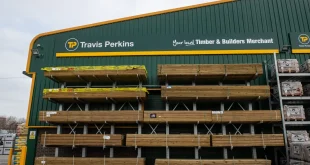The UK market for bricks in 2009 was almost half what it had been in 2007, according to a new report out this week.
Bricks and Blocks Market UK 2011-2015 from market researcher AMA Research shows the rapid downturn in the market, thanks to the decline in housebuilding and the fragile RMI market.
However, the report also finds that both production and sales and delivery figures improved in 2010, with AMA estimates for the full year showing a recovery of three to four percentage points.
Despite this, the report finds that confidence in the UK economy in general – and the housing market in particular – remains fragile and it is unlikely that the market will reach pre-recession figures in the short-medium term.
Facing bricks account for the bulk of sales at almost 80%, with common and engineering bricks accounting for the balance. The housing market, even now, accounts for an estimated 45% of facing brick sales, with around 20% used in commercial and public sector applications, and housing RMI and industrial applications accounting for 30% and 5% respectively.
Almost 14 million square metres of bricks were used in cladding in 2009, a 30% fall from the estimated 17.8 million square metres in 2008. Facing bricks are estimated to account for around 35% of the total UK wall cladding market, though brick volumes used in this application have been in long term decline reflecting the switch to apartments over the last decade. However, for the first time in a decade, the share of flats has declined as developers switch back to traditional housing which will help stimulate demand for bricks, if sustained.
UK sales of aggregate concrete blocks rose steadily between 2002 -2007, buoyed by a strong housing market and high levels of commercial construction activity and government spending on public housing projects. However, the recession and subsequent falls in the above markets led to estimated declines in market value of over 40% between 2007-09, with 2010 showing tentative signs of the market levelling out.
Quarrying of indigenous stone has been in long-term decline, and imports now account for over half of natural stone sales in the UK. In value terms, the market for natural building stone fell by around 10% in 2010, and was estimated at around £90 million.
The value of the UK cast stone market (building blocks and cladding), is broadly estimated to be worth around £5-6 million.
Sales of bricks and pre-cast concrete blocks are forecast to improve in 2011, by 6% and 1% respectively, although the market for natural and cast stone is likely to decline by 4% in 2011 and a further 4% in 2012 due to their higher dependence on commercial markets.
Growth to 2015 – for all product sectors – is likely to be moderate and our estimates indicate that by 2015 the market for bricks will be worth over £470 million, with concrete blocks also recovering. However, the recovery will be fragile reflecting an uncertain housebuilding market, declining public sector output and slow growth in the RMI market as consumer confidence slowly recovers.
AMA Research’s report “Bricks and Blocks Market – UK 2011-2015” is available in hard copy or electronic format for £665 and can be ordered online at www.amaresearch.co.uk.
 Builders Merchants Journal – BMJ Publishing to Builders Merchants and the UK merchanting industry for more than 95 years
Builders Merchants Journal – BMJ Publishing to Builders Merchants and the UK merchanting industry for more than 95 years



